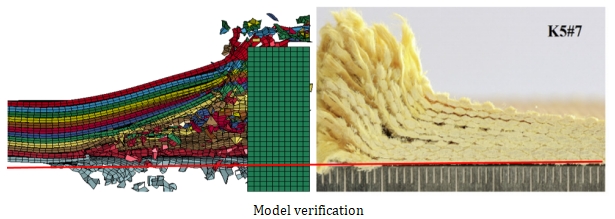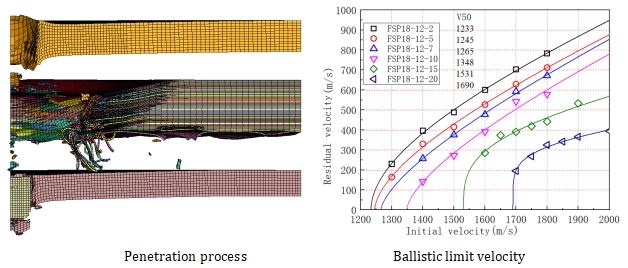 Open Access
Open Access
PROCEEDINGS
Fragment Penetration Damage Characteristics of Typical Composite Armor
1 Institute of Extreme Mechanics, Northwestern Polytechnical University, Xi’an, 710072, China
2 School of Aerospace Engineering, North University of China, Taiyuan, 310035, China
3 National Key Laboratory of Strength and Structural Integrity, Xi’an, 710072, China
* Corresponding Author: Yuan Li. Email:
The International Conference on Computational & Experimental Engineering and Sciences 2024, 30(3), 1-2. https://doi.org/10.32604/icces.2024.013336
Abstract
Light armored vehicles, as the primary means of force transport on contemporary battlefields, require not only high mobility but also better protection to meet the complex battlefield environment and mission requirements. Composite armor is widely used in the design of light armored vehicles due to its lightweight and excellent defensible performance. In this paper, the damage law of the composite armor of an infantry fighting vehicle, when penetrated by fragment-simulated projectiles (FSP), is studied by numerical simulation, and the homogeneous equivalent targets surrogating a combination of local protective armor and vulnerable parts are constructed based on the principle of ballistic limit equivalence. The simulation results show that under the penetration of FSP, the base armor steel on the outermost of the vehicle is mainly broken in the form of valgus petals, while the Kevlar-reinforced composite lining on the vehicle is broken in complex failure modes such as fiber fracture, perforation and interlayer cracking. The ballistic limit of the local structure of the vehicle and the 45# steel homogeneous equivalent target thickness are obtained for the typical vulnerable parts inside the vehicle.

Keywords
Cite This Article
 Copyright © 2024 The Author(s). Published by Tech Science Press.
Copyright © 2024 The Author(s). Published by Tech Science Press.This work is licensed under a Creative Commons Attribution 4.0 International License , which permits unrestricted use, distribution, and reproduction in any medium, provided the original work is properly cited.


 Submit a Paper
Submit a Paper Propose a Special lssue
Propose a Special lssue Download PDF
Download PDF Downloads
Downloads
 Citation Tools
Citation Tools